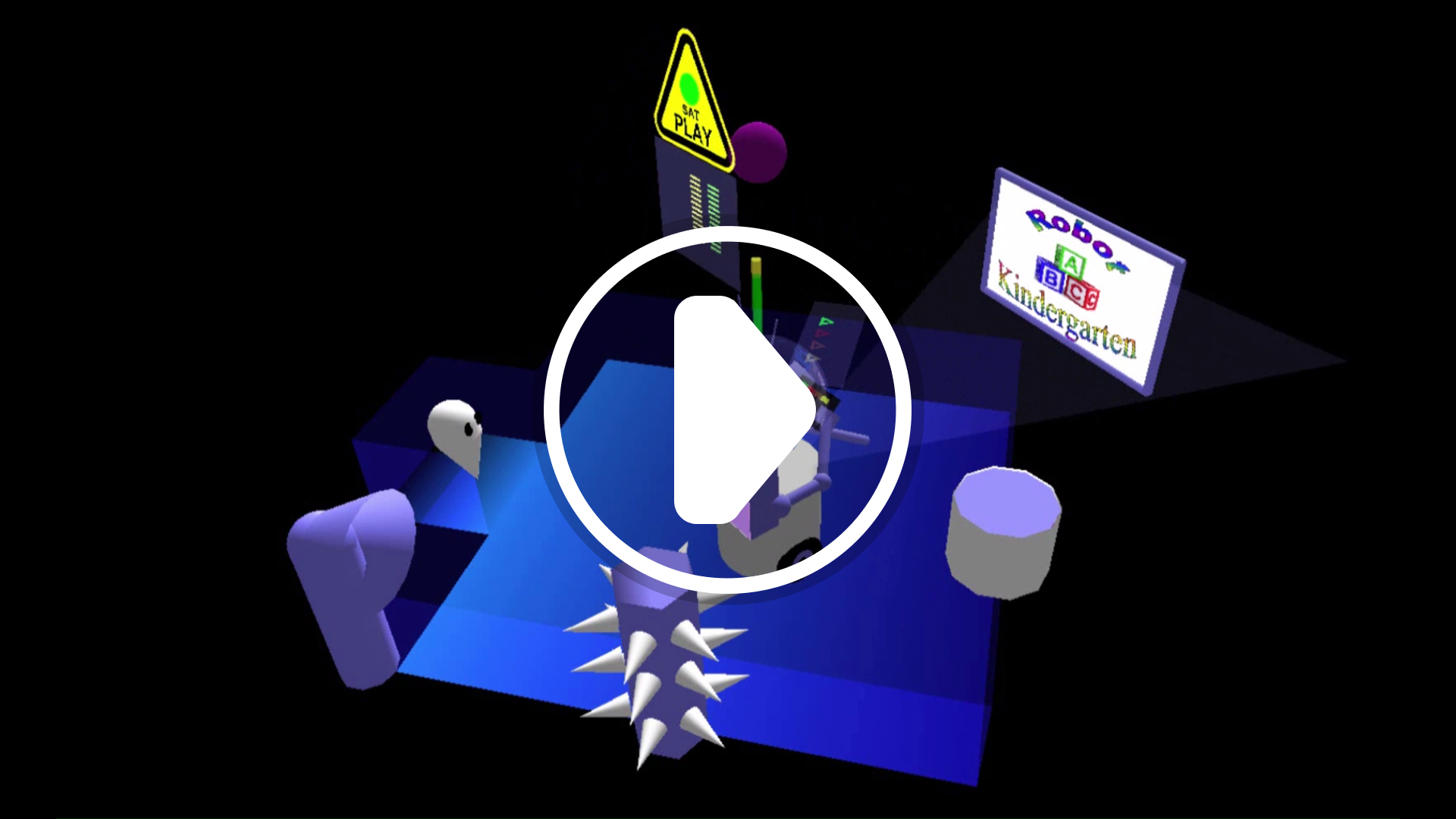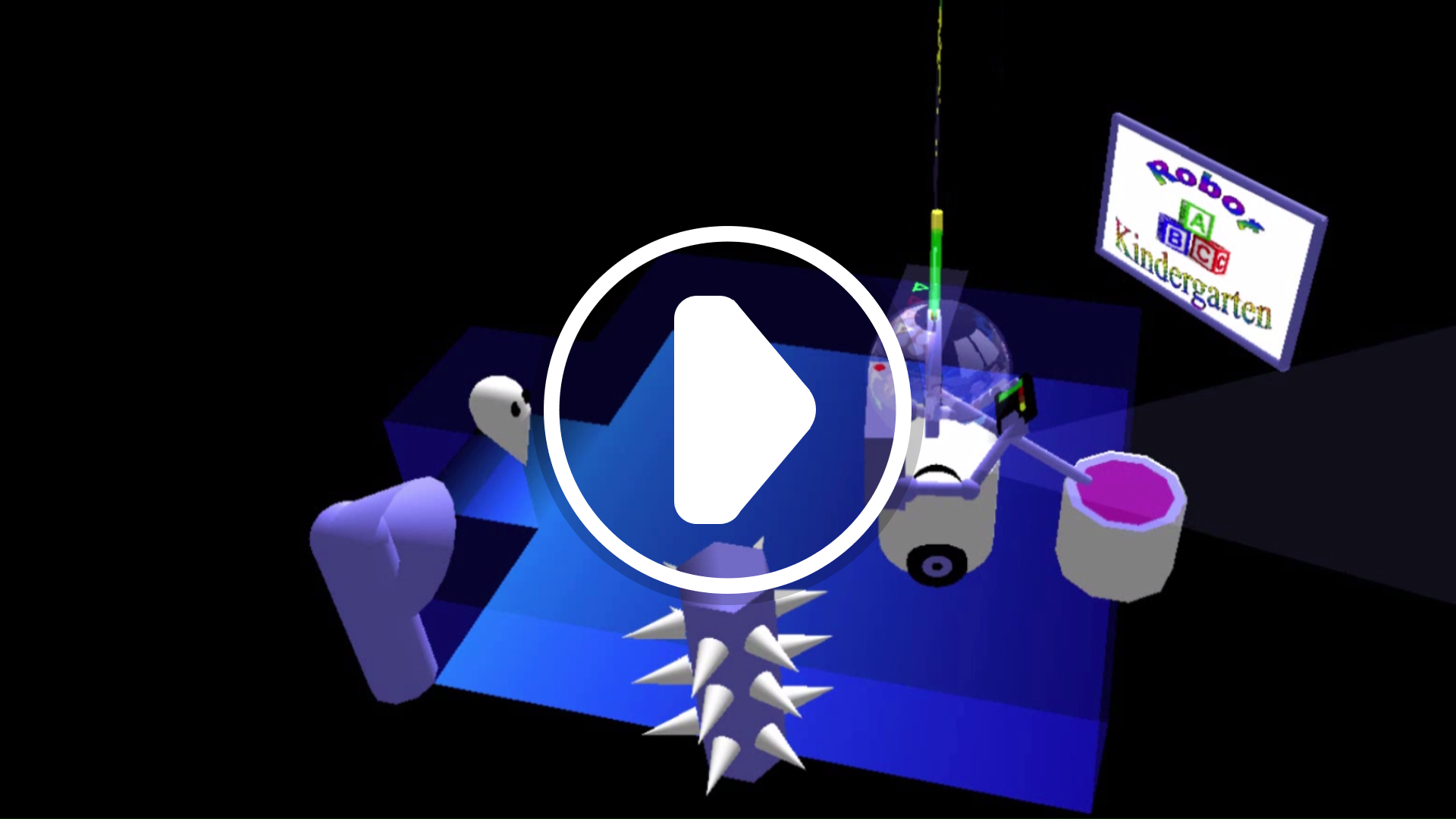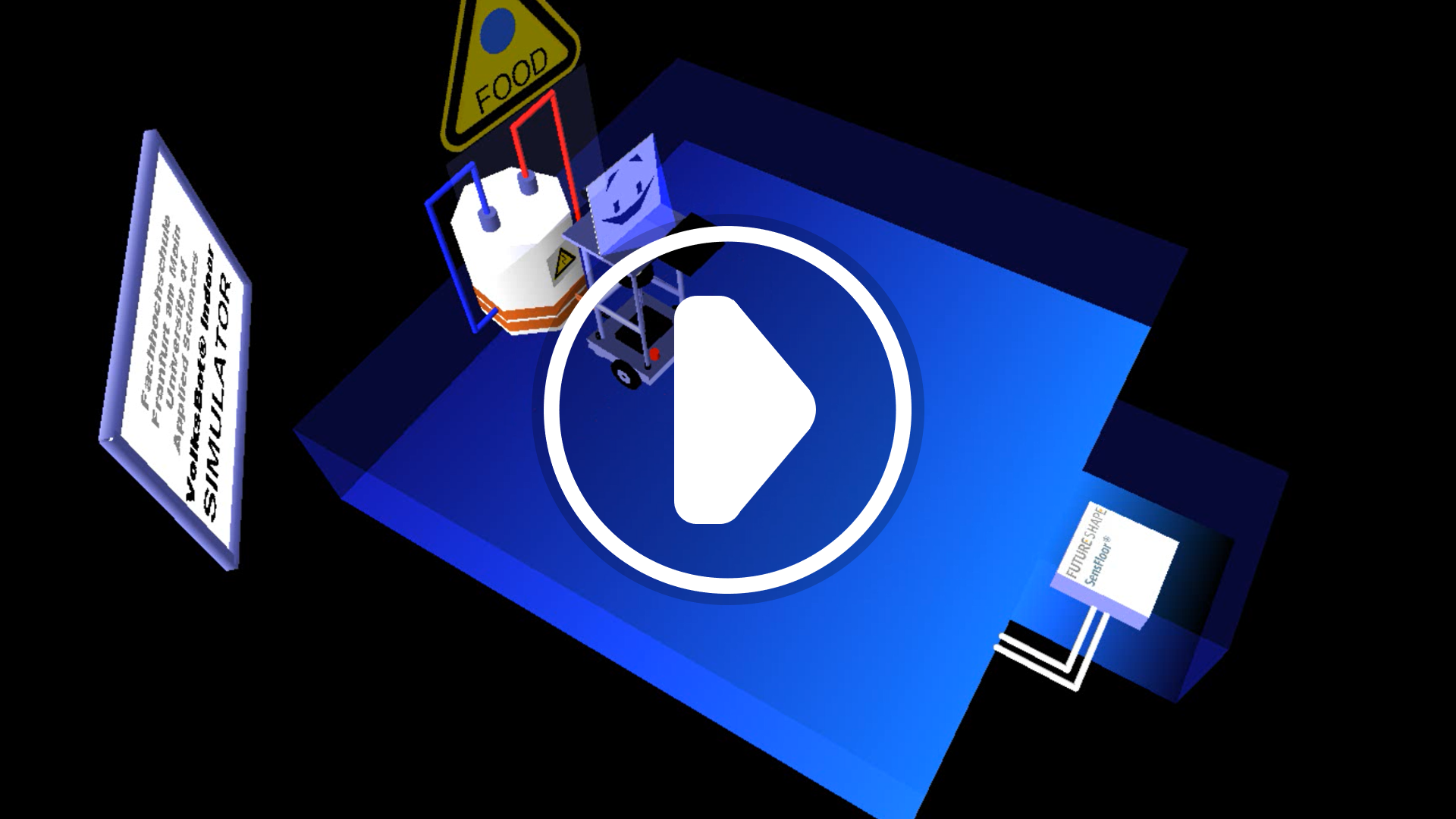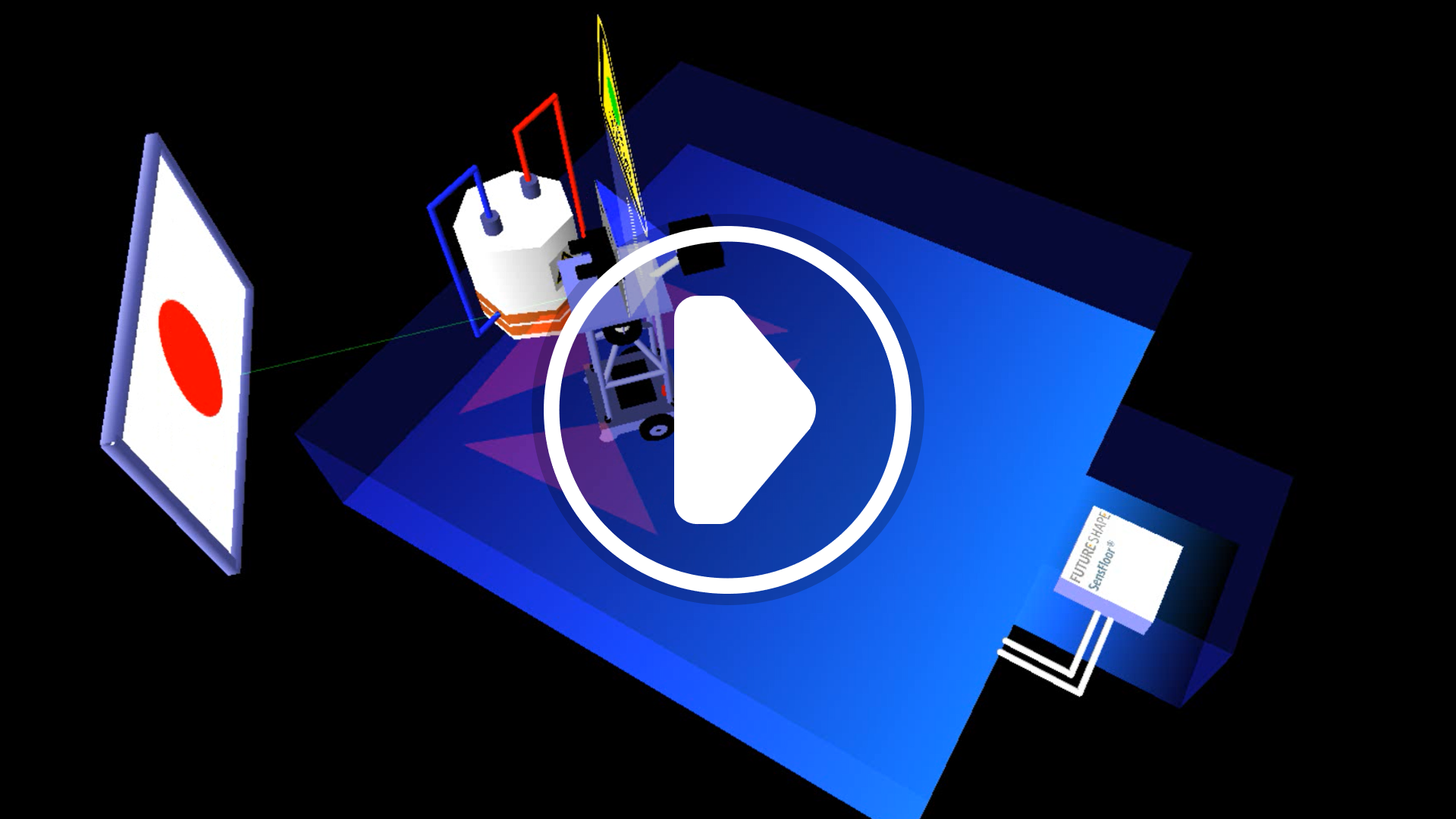Numerous videos below of 3D Virtual Agent ‘Simmy’ in a proposed ‘Kindergarten’ confine where learning happens mainly via images on the TV screen. Also some videos of the simulated Fraunhofer Volksbot with the add-ons I proposed to turn it into an Xzistor robot.
Note: Keep in mind that the square Learning Confine has in fact colour panels similar to Troopy‘s physical circular confine, but I hide these from view so that they are only visible to the 3D agent in the simulation.
Enjoy!
The discussion started with a request to show how the Xzistor Concept brain model can be used as basis for a ‘Robot Kindergarten‘ where robots are taught like infants and develop their intellectual capacities gradually. Ahead of changing the simulation to a Volksbot, I demonstrated how Simmy can learn in a ‘kindergarten’ type Learning Confine.

[No sound] In this video I have adapted Simmy’s environment to demonstrate how a virtual ‘Robot Kindergarten’ can be created within the simple C++/OpenGL simulation. The virtual agent (Simmy) will ‘see’ images on the TV screen and learn basic concepts via encouragement from a cherished tutor (emotional reward). The simulated agent’s optic view will be generated using the CameraView Method.
Of course the virtual agent cannot actually ‘see’ as a physical robot would, so we use the CameraView method to ‘calculate’ what it that the simulated robot would have in its field of view, pixelate it and turn it into a an array of colours that can be the basis of the optical state we will use as representation in the brain.
I used the video below to demonstrate how the TV screen in Simmy’s virtual confine can be used to display objects for the purposes of learning.

A follow-up video showing more of the virtual agent Simmy in a Learning Confine that works like a robot ‘Kindergarten‘.

In this video we see the Volksbot robot replacing ‘Simmy’ in our 3D simulation. This is the plain Volksbot (from the Fraunhofer Institute) robot before the changes we proposed to turn it into a robot that runs off the Xzistor Concept brain model.

[No sound] Above we see the Fraunhofer Volksbot alternate between the format used by the University of Applied Science of Frankfurt-am-Main and the proposed additions to run it on the Xzistor Concept brain model.

[No sound] A further video showing how the adapted Fraunhofer Volksbot could be turned into a robot with intelligence and emotions using the Xzistor Concept brain model. Here we see how it learns to recognise simple shapes. Note right at the beginning of the video how the robot shoots out two copper prongs that make contact with the charging terminals on the ‘battery power source’ – this ensures a very quick recharge and the robot’s energy level is restored.